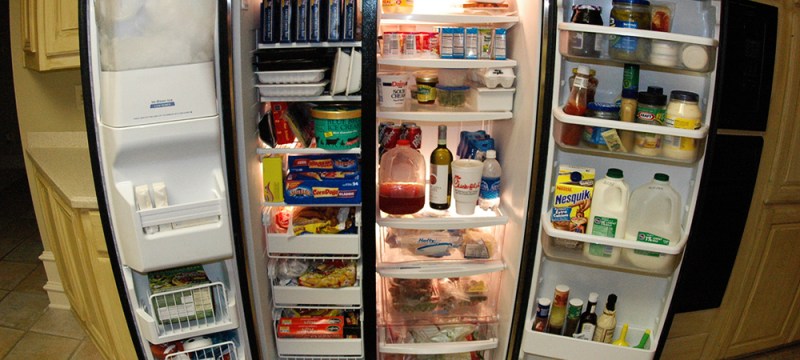Maintaining proper temperatures for your fridge and freezer is essential for preventing bacteria from growing and spoiling your food. It’s important to know what temperatures to set for these appliances, and you need to know how to check and maintain them so your food is kept in a suitable environment.
Temperatures

A fridge generally should sit around 37 degrees Fahrenheit, so setting your fridge to anywhere from 35 degrees to 38 will do just fine. This is the proper temperature that prevents bacteria from multiplying at a quick rate without ice forming on your fruits and vegetables.
A freezer should stay well below the freezing marker, which is 32 degrees Fahrenheit. Having a freezer set to 0 degrees will make sure all foods stored in there will be safely frozen. If you’re one who has food sitting in the freezer for a long time, try lowering the temperature to -10 or -20 degrees, as this will help prolong the life of the food.
Tips For Maintaining The Correct Fridge And Freezer Temperatures

Even after setting the temperature for your fridge and freezer, the temperature can fluctuate based on a number of external factors. There are a few things you can do to monitor your appliances and make sure that they are maintaining the proper temperatures to protect your food:
- Buy thermometers for your fridge and freezer. These will allow you to measure the temperature at any given time, and allow you to measure different parts of your fridge. Cold air sinks, meaning the bottom shelves of your fridge will be colder than the top shelves. You’ll want to check the thermometers regularly to make sure the temperatures are where they need to be.
- Try to not open the door so much. Frequently opening and closing the fridge’s door causes the temperature to become unsteady. When you start cooking, try to take everything you need out at once to reduce the number of times you open the fridge. Return the ingredients to the fridge at once as well.
- The fuller your fridge, the less chance that the temperature will drastically change when you open the door. Try to keep your fridge and freezer stocked, and organize it so there are no big empty spots on the shelves to prevent temperatures from drastically swinging.
- When you cook a meal and plan to refrigerate the leftovers, let the food cool down before placing it in the fridge. The heat from the food will cause the overall temperature of the fridge to rise, and the fridge will have to use more energy to maintain its temperature settings. Let your leftovers cool down at room temperature and tightly seal them before placing them in the fridge.
- Ensure you properly close the fridge and freezer doors each time you open them. Even a slight crack will lead to a massive temperature imbalance that could spoil all the food inside. If the door isn’t closing, check to see if there’s anything blocking the door or if the seal is damaged and needs to be repaired.
